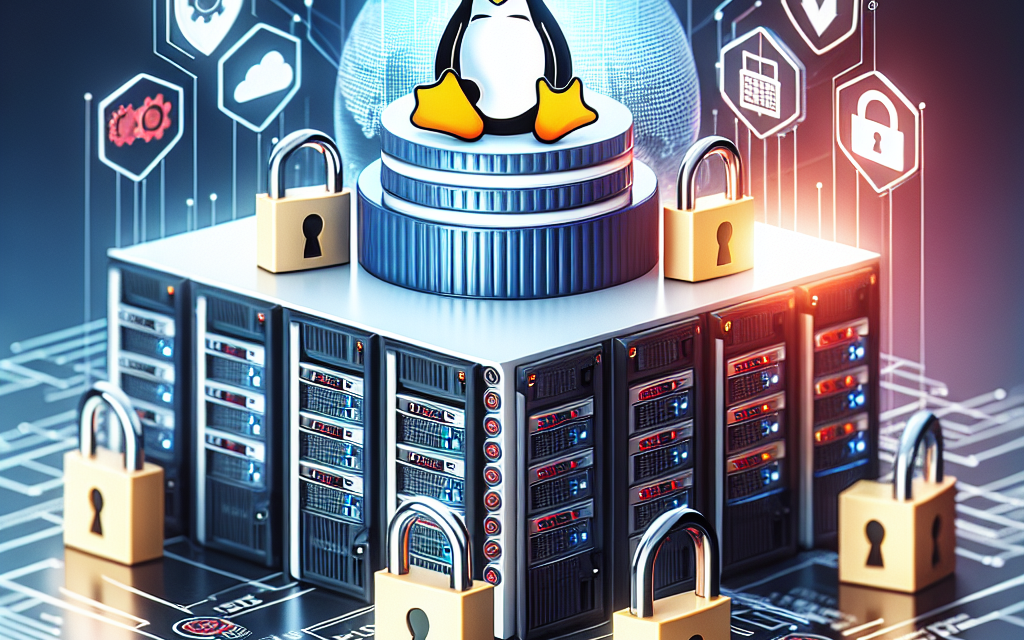As the popularity of Docker continues to soar in DevOps and cloud-native environments, securing your Docker containers has never been more crucial. Whether you’re a seasoned DevOps engineer or a beginner in Docker, implementing best security practices is essential to protect your applications and infrastructure. In this article, we’ll delve into techniques for securing Docker containers on Linux servers to help you maintain a fortified environment.
1. Use Official Images
When deploying Docker containers, always use images from trusted sources, preferably official repositories. Docker Hub and other reputable registries provide images built and maintained by the community or industry professionals. Do not use unverified or third-party images that could contain vulnerabilities. Before pulling an image, validate the image’s authenticity and check for its security updates.
# Example: Pulling an official Nginx image
docker pull nginx:latest2. Minimize Image Size
Smaller images have fewer dependencies, which reduces your attack surface. Using lightweight base images like Alpine or BusyBox can help you create smaller images. This practice not only enhances security by lowering potential vulnerabilities but also improves performance.
# Use a lightweight base image
FROM alpine:latest3. Apply the Principle of Least Privilege
Run your containers with the least privilege necessary. Avoid using the root user; instead, create a non-root user in your Dockerfile. This approach limits the potential damage an attacker can cause if they gain access to your containers.
# Dockerfile example to create a non-root user and switch to that user
RUN adduser -D myuser
USER myuser4. Regularly Update Images
Frequent updates are vital in the world of containerized applications. Set up a routine to regularly check for updates to your base images and package dependencies. Use tools like Docker Bench for Security or a CI/CD pipeline to automate vulnerability scanning and perform regular audits.
# Example: Check for outdated images
docker images -f "dangling=false" --format "{{.Repository}}:{{.Tag}} {{.ID}}"5. Isolate Containers
Implement networking and resource isolation to minimize the risk of container breakout attacks. Utilize Docker features such as networks, namespaces, and control groups (cgroups) to properly isolate containers from one another.
# Create a custom bridge network for better isolation
docker network create my_network6. Harden the Docker Daemon
Securing the Docker daemon is key to safeguarding your containers. Follow these best practices:
- Use TLS: Enable TLS to encrypt communication between the Docker client and daemon.
- Limit API access: Restrict access to the Docker API, exposing it only to trusted sources.
- Use user namespaces: Enable user namespaces to map container users to non-root users on the host.
You can enable user namespaces in the Docker daemon configuration file (/etc/docker/daemon.json):
{
"userns-remap": "default"
}7. Implement Resource Limits
Setting resource limits (CPU, memory, and storage) for your containers helps prevent a single container from overwhelming the host system. Use Docker’s command-line options to define these limits when deploying a container.
# Example: Set memory and CPU limits
docker run --memory="256m" --cpus="1.0" myimage8. Use Security Scanning Tools
Utilize security scanning tools like Clair, Anchore, or Trivy to identify vulnerabilities in your containers and images routinely. Integrating these tools into your CI/CD pipeline ensures that every build is scanned before deployment.
# Example: Run Trivy to scan your image
trivy image myimage:latest9. Log and Monitor Activity
Monitoring the activity within your Docker containers is crucial for detecting suspicious behaviors. Tools like the ELK Stack (Elasticsearch, Logstash, Kibana) or Grafana with Prometheus can be set up to capture logs and metrics from your containers, providing a comprehensive view of their performance and security.
# Example: Monitor containers with Docker Compose and ELK
docker-compose -f elk-stack.yml up -d10. Backup Data
Regular backups of your persistent data are vital in minimizing data loss during an attack or accident. Use Docker volumes for storing data and ensure you have a backup strategy in place, including off-site storage options.
# Example: Backup a Docker volume
docker run --rm --volumes-from my_container -v $(pwd):/backup busybox tar cvf /backup/backup.tar /dataConclusion
Securing Docker containers is an ongoing process that involves a combination of best practices, diligent management, and continuous monitoring. By adhering to the strategies outlined in this article, you can safeguard your containerized applications effectively. Remember, security is not just a one-time setup; it requires ongoing effort and vigilance.
Adopting these practices will go a long way in minimizing risks associated with Docker containers on Linux servers, ultimately delivering a more reliable and secure environment for your applications.
Feel free to share your thoughts or experiences on securing Docker containers in the comments below! Let’s learn together and enhance the security of our containerized applications.





